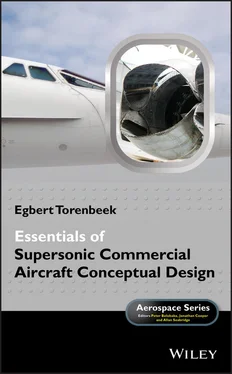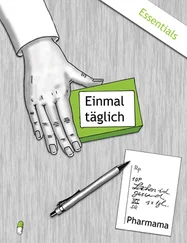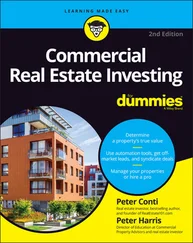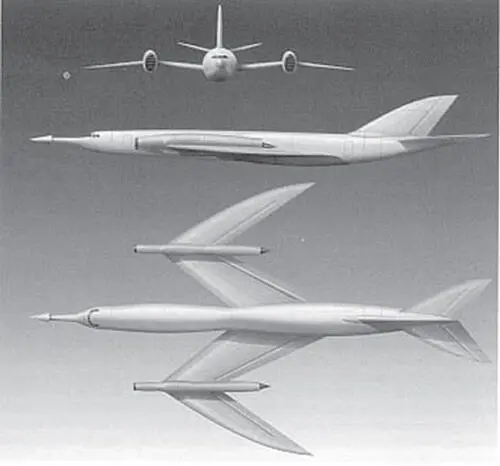
Figure 1.4The M‐wing layout for cruising at Mach 1.20, generated by the STAC in 1956.
By the early 1970s it was recognized that the higher fuel prices and risk of a transonic airplane development outweighed its potential benefits, an opinion that was widely held throughout the mid‐1990s. Around the year 2000 Boeing marketed a concept that was designed for extended ranges greater than 17,000 km, flying at cruise speeds of Mach 0.95 or above. It was derived from “slowing down” supersonic configurations rather than “speeding up” conventional subsonic configurations and became known as the “Sonic Cruiser”. This project came to an end after the events of September 2001, when airlines that were enthusiastic about the Sonic Cruiser initially were struggling for their survival.
1.4 US High Speed Research and Development Programs
During the 1970s and 1980s several projects of the American industry were aimed at investigating applications of NASA research of advanced supersonic configurations. Study projects were part of the supersonic cruise aircraft research (SCAR) program, focusing on a second generation of supersonic airliners transporting some 300 passengers over trans‐Pacific routes at speeds up to Mach 2.70. The SCAR Program was brought to an end by the marginal performance and economic potentials that appeared possible with the then available technology base. A resurgence of interest in a second‐generation high‐speed commercial transport (HSCT) occurred during the 1990s in Europe, the USA and Asia. Projections in 1989 for the 1995–2015 period indicated that the market in terms of passenger miles would increase by a factor of six (relative to 1971–1989) in the North‐Mid Pacific and by a factor of seven in the Far East. Based on these projections, a potential market for approximately a thousand HSCT aircraft was foreseen in 1989, well over the minimum needed for a a profitable development program launch. NASA studies concluded that a supersonic transport launched in the early 21st century could be compatible with current airports, use jet fuel, and be within ten to fifteen years' technology reach.
In 1989 NASA and the US industry began investigating the potential of HSCT specifications and required technologies. The original SST of the 1960s was planned for Mach 2.70 but the required titanium structure was too heavy, and the HSCT program of Boeing and McDonnell Douglas converged on a more modest Mach 2.40, 300 seat, 9,270 km range jet A fueled aircraft as a focus for technology development. The challenges facing the HSR program were the extremely restrictive constraints placed on emissions, airfield noise, and operation costs. After approximately five years of research it was concluded that insufficient advancement in technology was available to achieve economic viability and to comply with environmental requirements. In particular an acceptable level of the sonic boom could not be achieved and the program was terminated in 1998.
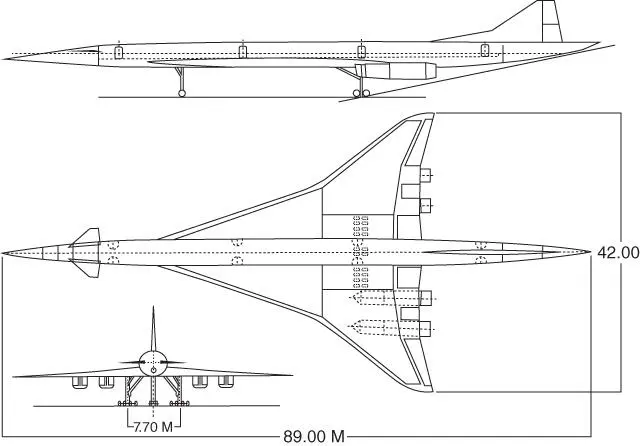
Figure 1.5Design study of the European Supersonic Commercial Transport.
1.5 European Supersonic Research Program
Similar to the US studies during the 1990s, the European industry indicated a market potential for an aircraft substantially larger and with longer longer range than the Concorde, linking the world's major cities. In 1990 the companies Aerospatiale, British Aerospace, and Deutsche Airbus launched a three‐year study into the technical feasibility of a second‐generation supersonic transport successor of the Concorde. In 1994 the Supersonic Research Program (ESRP) was established to undertake the research and technology development required to produce the enabling technologies for second generation supersonic commercial transport. The ESRP was supported by a common reference configuration known as the European Supersonic Commercial Transport (ESCT). Its main characteristics are compared with those of the Concorde and the Tu 144 in Table 1.1.
Table 1.1Characteristics of the first generation supersonic transport and the ESCT
|
|
Concorde |
Tu‐144 |
ESCT |
| Maximum take‐off mass |
tonnes |
185 |
200 |
320 |
| Range |
km |
6,200 |
3,500 |
10,000 |
| Span |
m |
25.6 |
28.8 |
42.0 |
| Length |
m |
61.7 |
65.7 |
89.0 |
| Passengers |
|
90 |
150 |
250 |
| Supersonic cruise Mach number |
|
2.0 |
2.35 |
2.0 |
Also similar to the US studies during the 1990s, the European industry indicated a market potential for an aircraft substantially larger and with longer range than the Concorde, linking the world's major cities. The ESCT could be economically viable and environmentally friendly, in particular due to its capacity to carry 250 passengers over distances up to 10,000 km and its much improved take‐off field performance compared to the Concorde. Figure 1.5depicts a three view drawing of one of the designs studied in the framework of the ESCT.
Due to the widely divergent requirements at supersonic and low‐subsonic flight conditions it is unavoidable that the engines for the ESCT will have a variable geometry and/or operating cycle. Figure 1.6depicts the mid tandem fan (MTF) power plant selected for the ESCT, generated by Roll‐Royce and SNECMA in cooperation. This engine concept is equipped with a secondary fan coupled to the secondary body. During take‐off and climb the air enters the engine via auxiliary inlets. This double flow path allows very low specific fuel consumption during subsonic operation with a bypass ratio of 12 at Mach 0.8 and an exhaust velocity less than 400 m s −1at the converging nozzle outlet. Auxiliary inlets are closed during the supersonic cruise at Mach 1.6 and the variable inlet mid‐fan guide vanes reduce frontal airflow to the bypass duct. The bypass ratio is then 2.5 and the exhaust jet velocity 620 m s −1.
1.6 A Market for a Supersonic Commercial Aircraft?

Figure 1.6Single spool MTF in operating mode for take‐off (top) and cruise (bottom).
Ever since jet‐powered airliners made their introduction into service during the 1950s, passengers on medium to long range routes have been transported at cruising speeds up to 900 km h −1(Mach 0.85) in the stratosphere. Military aircraft have been able to pass the so‐called “sound barrier” in routine flights since about 1960. A few exceptional types achieved continuous speeds higher than Mach 3 at altitudes above 20 km. It is therefore not surprising that after 1975 the development of a second generation supersonic airliner became a challenge to the aeronautical community. Since then, a huge amount of money has been spent on R&D programs aimed at developing advanced technology for a new generation of HSCT aircraft. Arguably it is stunning that, despite 27 years of Concorde's satisfactory passenger service and so many technological advancements applied in all sectors of civil aviation, none of these programs have resulted in a viable development project for the near future aimed at producing an advanced supersonic commercial aircraft .
Читать дальше
